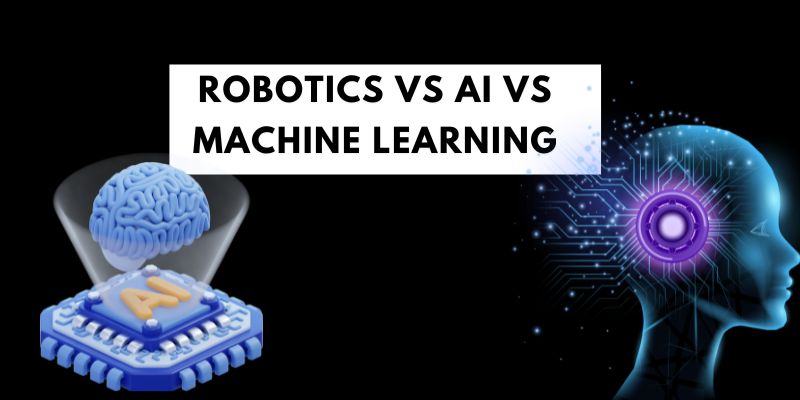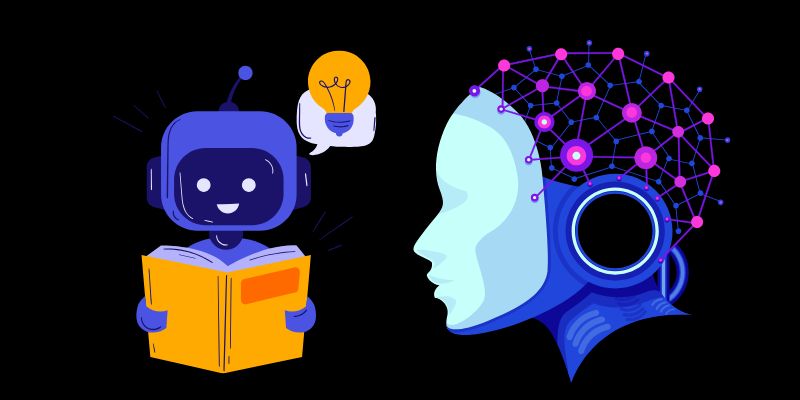Robotics vs AI vs Machine Learning
In the dynamic tech landscape of 2025, Robotics vs AI vs Machine Learning defines a critical comparison. Robotics crafts physical machines that act in the real world, AI drives intelligent decision-making across digital and physical realms, and Machine Learning powers adaptability through data. Together, they fuel innovations like autonomous robots and smart systems, blending hardware and intellect for a transformative future.
Contents
Robotics – AI – Machine Learning
Robotics is a branch of engineering and technology focused on designing, building, and operating physical machines—robots—that can perform tasks autonomously or semi-autonomously. Robots interact with the physical world through sensors, actuators, and mechanical components. Historically, robotics dealt with pre-programmed machines executing repetitive actions, like assembly-line robots in manufacturing, but modern advancements have expanded its scope.
Artificial Intelligence (AI) is a broad field within computer science that aims to create systems capable of mimicking human intelligence. This includes reasoning, problem-solving, perception, and decision-making. AI is not confined to physical entities; it powers software solutions like virtual assistants (e.g., Siri), recommendation engines (e.g., Netflix), and game-playing algorithms (e.g., AlphaGo). AI seeks to replicate cognitive processes, often without needing a physical “body.”
Machine Learning (ML) is a subset of AI that focuses on enabling systems to learn from data and improve over time without explicit programming. ML algorithms identify patterns in datasets and use them to make predictions or decisions. Examples include spam email filters, image recognition tools, and predictive maintenance models. ML is a key driver behind many AI applications, providing the “learning” capability.

Key Differences of Robotics vs AI vs Machine Learning
Focus and Scope
Robotics: Centers on the physical embodiment of machines—hardware like motors, sensors, and structures. Its primary goal is to enable machines to interact with and manipulate the physical environment.
AI: Focuses on intelligence itself, typically through software. It’s about creating systems that think and act like humans, regardless of whether they have a physical form.
ML: A specific technique within AI, emphasizing data-driven learning. It’s narrower than AI, concentrating on algorithms that adapt based on experience rather than broad intelligence.
Applications
Robotics: Used in industries like manufacturing (e.g., robotic arms), healthcare (e.g., surgical robots), and logistics (e.g., warehouse robots). Think of drones navigating obstacles or self-driving cars avoiding hazards.
AI: Powers diverse applications, from chatbots and facial recognition to financial forecasting and autonomous decision-making in software systems.
ML: Drives specific tasks like classifying images, predicting stock prices, or recommending products based on user behavior. It’s the engine behind many AI solutions but doesn’t inherently involve physical machines.
Physical vs. Digital
Robotics: Inherently tied to the physical world. A robot needs a tangible form to move, sense, or act.
AI: Primarily digital, existing as software that processes information and generates outputs, with no requirement for a physical presence.
ML: Also digital, operating as algorithms that analyze data and refine their performance, typically within software environments.
Dependency
Robotics: Can function without AI or ML for basic tasks (e.g., a pre-programmed robotic arm). However, advanced robots often integrate AI for smarter behavior.
AI: Doesn’t depend on robotics—it can operate independently in software. ML is one ofBridging the gap between robotics and AI is artificially intelligent robots—robots controlled by artificial intelligence. AI is the brain, and robotics is the body.
ML: Relies on data and algorithms, serving as a critical component of AI but not a standalone field like robotics or AI.

How They Work Together
The synergy of robotics, AI, and ML is where the magic happens. Artificially intelligent robots combine these fields: robotics provides the physical platform, AI supplies the decision-making “brain,” and ML enables the system to learn and adapt. For instance:
A warehouse robot uses robotics for movement, AI for pathfinding and obstacle avoidance, and ML to optimize routes based on past data.
Self-driving cars rely on robotics (sensors and wheels), AI (real-time decision-making), and ML (learning from driving patterns).
Surgical robots integrate robotics (precision tools), AI (procedure planning), and ML (adapting to patient-specific data).
In 2025, projects like Grass, Nillion, and EigenLayer (highlighted in your earlier prompt) showcase this convergence. Grass uses idle bandwidth (robotics-like resource management) with AI/ML for data processing. Nillion employs AI/ML for secure computation, potentially powering robotic nodes. EigenLayer leverages Ethereum staking (a digital system) with AI/ML for network optimization, hinting at future robotic applications.
Robotics is the body, AI is the mind, and ML is the learning mechanism. While distinct—robotics builds machines, AI creates intelligence, and ML refines it through data—they converge in cutting-edge systems shaping 2025 and beyond. For deeper insights, explore resources like Nature’s Robotics and AI Outlook or recent X posts from thought leaders in the space.
Let New Eagle Eyes know if you’d like a deeper dive into any aspect!